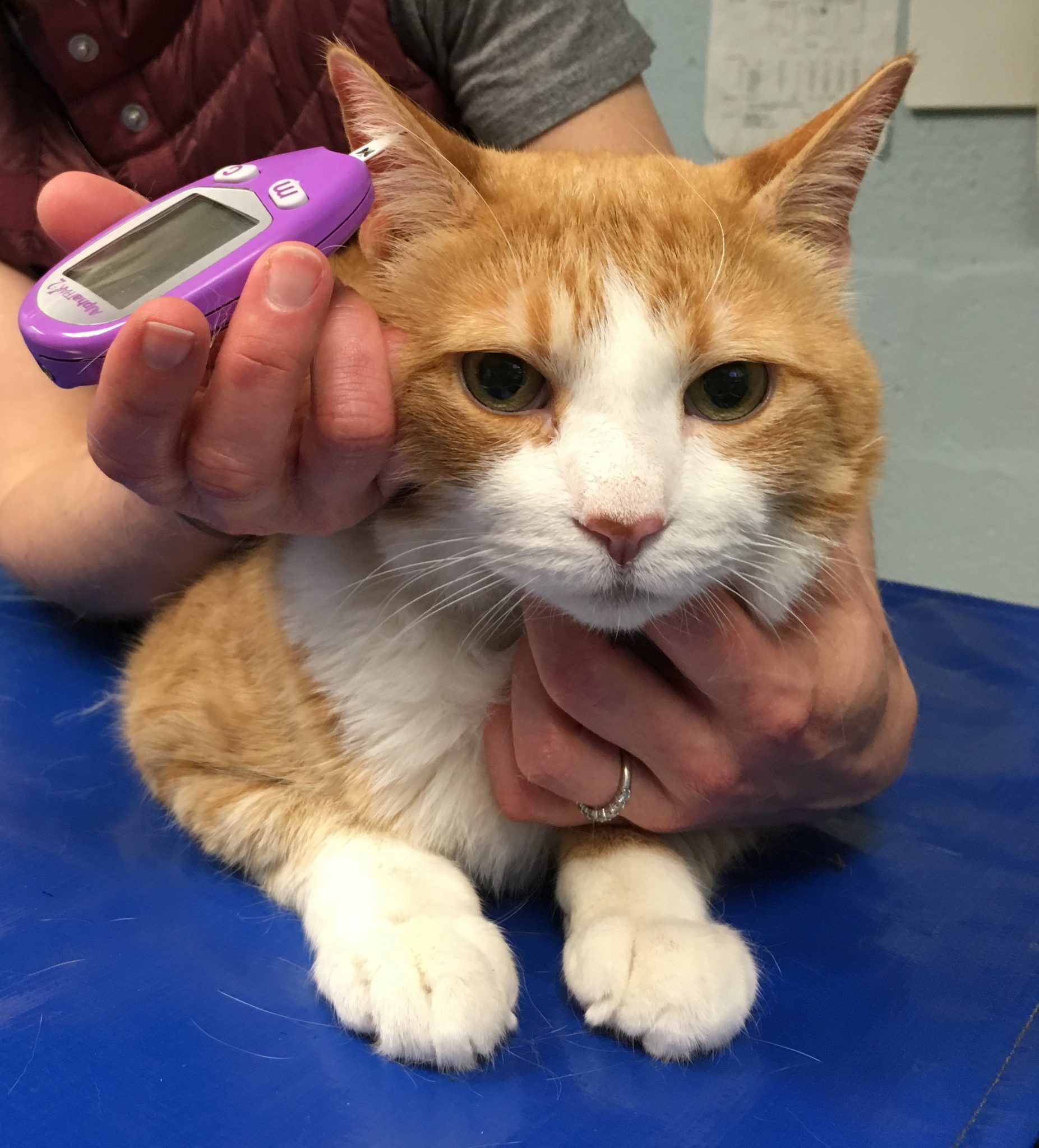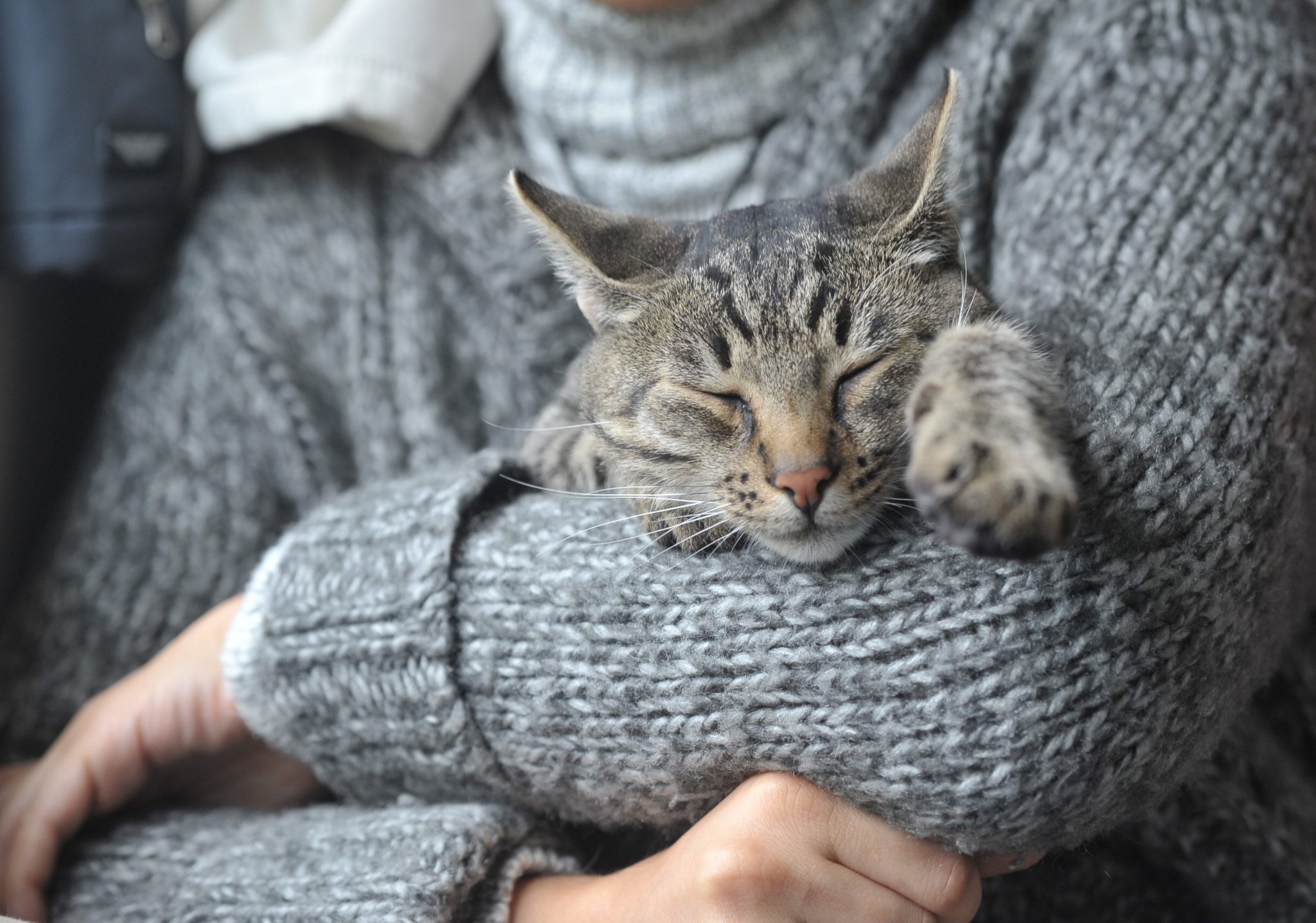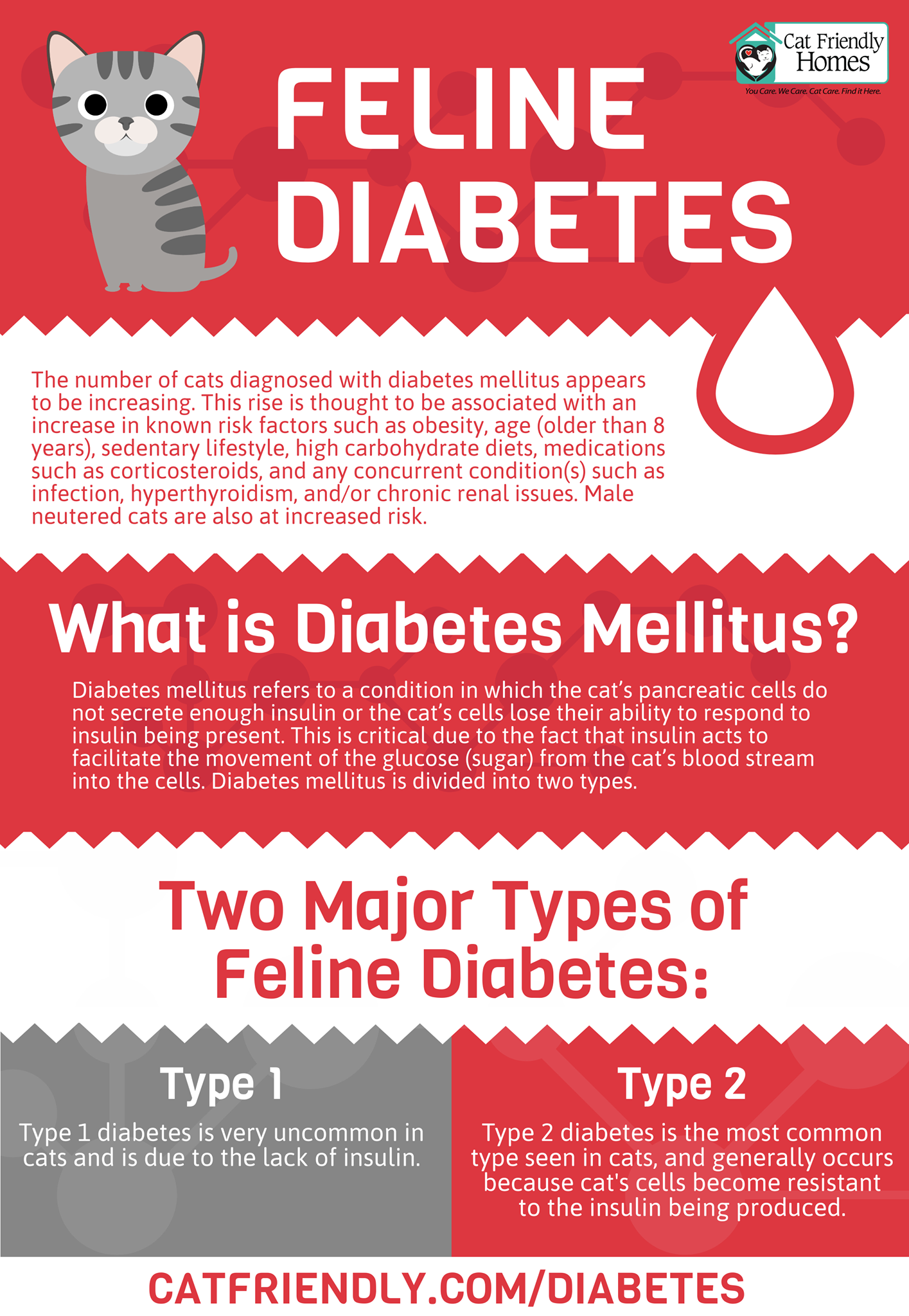What is Diabetes Mellitus?
Feline diabetes, known as diabetes mellitus, has become an increasingly common condition in cats. It often occurs in cats that are overweight and/or older. As in humans, cats have a pancreas that should produce insulin to regulate the sugar (glucose) in their bodies from their diet. Diabetes occurs when a cat’s body is not able to properly balance out the sugar in their bloodstream.
If your veterinarian diagnoses your cat with diabetes, you will need to work together to create a plan to manage this disease. You are an important part in creating a treatment plan for your cat. When diabetes goes untreated, you may notice increased signs and symptoms (listed below) which can progress leading to pain, nerve damage, muscle weakness, other diseases or conditions, or even death.
Risk Factors
The following factors could put your cat at higher risk for developing diabetes:
- Male
- Neutered
- Over seven (7) years of age
- Overweight or obese
- Taking medications such as corticosteroids
- Other conditions happening at the same time, such as infection, hyperthyroidism, and/or renal issues
Diagnosis
Feline diabetes is not always easy to diagnose. Your veterinarian will need to conduct a thorough examination of your cat, obtain an individual medical history, and conduct laboratory tests. In the early stages of diabetes, you may notice that your cat “seems a little off” or “less interactive.”
Signs and Symptoms
If you notice any of the following behaviors or problems in your cat, contact your veterinarian. This information may alert them to the possibility that your cat has diabetes.
- Weight loss
- Drinking more water than normal
- Drinking from unusual places
- Begging for food/increased appetite
- Decreased ability to jump
- Walking on heels instead of toes (known as “plantigrade” stance)
- Lethargy or decreased activity
- Urine is sticky or difficult to clean
- More frequent urination or urination outside of litter box

Testing
If your veterinarian suspects that your cat has diabetes, they will need to conduct blood and urine tests. These tests will allow them to rule out other diseases or conditions.
When they review the blood test, your veterinarian is looking for repeated abnormally high levels of blood glucose, referred to as hyperglycemia, and the presence of glucose (sugar) in the urine, referred to as glucosuria.
Treatment
Once your cat is diagnosed with diabetes, you will work with your veterinarian to create a monitoring and treatment plan. There are different options to treat diabetes. Also, many cats have other diseases or conditions which may complicate treatment. It is crucial to be honest with your veterinarian about your goals, time, and ability to monitor and treat your cat. So, try and maintain a frequent, open dialogue.
Goals of Treatment
- Potential remission is the goal but is not possible for all cats
- Blood glucose regulation and stabilization
- Stable, appropriate body weight
- Reduction of signs and symptoms (noted above)
- Good quality of life
- Avoiding hypoglycemia (low blood sugar), hyperglycemia (high blood sugar), ketoacidosis (cell starvation where fat breaks down to provide energy), or neuropathy (pain or damage to nerves)
Treatment Options
Feeding Recommendations and Diet
To help keep the diabetes under control and to prevent further damage, your cat needs to maintain a healthy weight. As with humans, a healthy diet and active lifestyle can make your cat’s treatment more effective, and improve their quality of life. Your veterinarian will determine your cat’s ideal weight, then you both can agree on a low carb diet to help your cat achieve and maintain that weight. Try using a baby scale at home for an accurate weight.
Insulin Therapy
There are many insulin types available that can be combined with an appropriate diet. Insulin is most often delivered by injection. Your veterinarian can teach you how to test glucose levels and provide injections to your cat. Most cats require injections two times each day. Many cat caregivers find that with practice they are able to administer insulin to their cats quite easily.
Initial Treatment
Once you and your veterinarian chose a treatment plan, you will learn how to monitor your cat and provide medications appropriately. Be sure to ask for a demonstration from the veterinary practice on how to test glucose levels, handle insulin, and administer it to your cat. It is recommended that you keep a daily treatment log including the dose, time, observations, food and water intake, and urine output. In some cases, hospitalization may be needed at the beginning of treatment. Your veterinarian may also identify and treat any pain your cat may be experiencing.

Monitoring
An important part of the treatment plan is monitoring your cat’s response to the insulin and making adjustments as needed. There are three different monitoring protocols – intensive, standard, and loose.
You and your veterinarian will determine the method that works best for you and your cat.
Many diabetic cats can live happy and normal lives. To help your cat live a long life:
- Maintain recommended checkups
- Work to keep their blood sugar level stable
- Strive to maintain a healthy body weight
- Manage other diseases
You are a key part of your cat’s diabetes treatment plan. Remember to be open and honest with your veterinarian about your ability to monitor and provide insulin therapy. Each cat is different and your veterinarian will work with you on an individualized healthcare plan for you and your cat.



